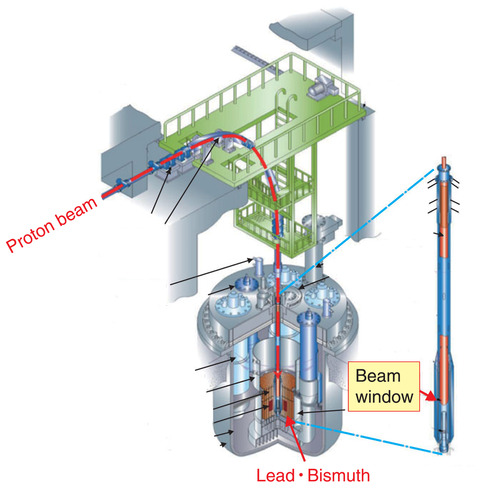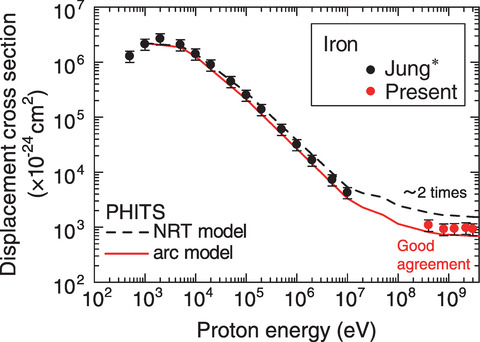
Fig.4-15 Overview of ADS proposed by JAEA

Fig.4-16 Comparison of the present experimental data with calculation data using PHITS
JAEA is developing Accelerator-Driven Systems (ADSs) for efficiently reducing the hazards and amount of high-level radioactive waste generated by nuclear reactors. Steel is used for fabricating the beam window in an ADS, introducing a high-energy proton beam with billions of electron volts (GeV) (Fig.4-15). “Displacement damage” occurs when protons are injected into materials, displacing the positions of atoms in the lattice and consequently deteriorating the material strength. The displacement per atom (dpa) is usually used as an index to evaluate the displacement damage of materials. The displacement cross section is used to estimate the number of displacements produced in the material. Owing to very limited experimental data of the cross section, validating the calculation model for estimating the number of displacements is difficult.
In this study, the displacement cross sections of iron and copper, which are essential in ADS, were measured using the accelerator at the Japan Proton Accelerator Research Complex (J-PARC). Based on Matthiessen's rule, the displacement damage is found to be proportional to the increase in the electrical resistance of metal samples irradiated by the proton beam. To prevent the damage from being recovered by thermal motions, the sample was cooled to approximately -269 ℃ (4 K), and the increase in the electrical resistance was measured after irradiation. Through this experiment, we obtained the world's first displacement cross section of iron in the GeV energy region.
The displacement cross sections were calculated by incorporating the displacement model into Particle and Heavy Ion Transport code System (PHITS), and the calculation results were compared with the experimental data (Fig.4-16). Although the calculation results obtained using the widely used NRT model were in relatively good agreement with the experimental cross sections for protons below 10 MeV, they are larger than the experimental cross sections by a factor of 2 in the GeV energy region. Alternatively, the latest athermal-recombination-corrected (arc) model based on the molecular dynamics results showed excellent agreement with the experimental data.
This study is expected to improve the accuracy of damage evaluation for ADS-related and other materials used in high-energy accelerator facilities, such as J-PARC, and further enhance their safety.
This study was supported by MEXT (Ministry of Education, Culture, Sports, Science and Technology, Japan) Innovative Nuclear Research and Development Program (No.JPMXD0216815810).
(Shin-ichiro Meigo)
*Jung, P., Atomic Displacement Functions of Cubic Metals, Journal of Nuclear Materials, vol.117, 1983, p.70-77.
<Previous: 4-6 | Next: 5 Neutron and Synchrotron Radiation Research>